

After the long time of staying at home, workers graduallyreturn to their work. Do you and your colleagues wear facial masks? In this special period of combating coronavirus, do you miss the flexibility and warmth of your office? This month’s Master Insights would focuson the relationship between office design and work quality ~

Work environment and employee satisfaction
Studies suggest that in the encouragement proposed by Abraham Maslow, the hierarchy of needs theory accounts for the most important position. According to the empirical study carried out by eastday.com in 2019, over 90% of interviewees expressed satisfaction towards the length of working time in Shanghai. Obviously, the needs level of Chinese employees have been raised above physiological needs and the focus on the length of working time has been shifted toward the working condition.

Today, work has been viewed as part of life. On the one hand, the young generation has been doubting the meaning of work itself. They expect works to be fun, to be fit with their own values and the working environment to be comfortable. Therefore, the enterprise should not only make improvement on payment, but also on working space and environment.
What can office design do?
The pioneers of this issue are enterprises like Google and Facebook. When, where and how employees work is not the point. Exquisite designs are emerging one after another, injecting energy and dynamics into office environment.
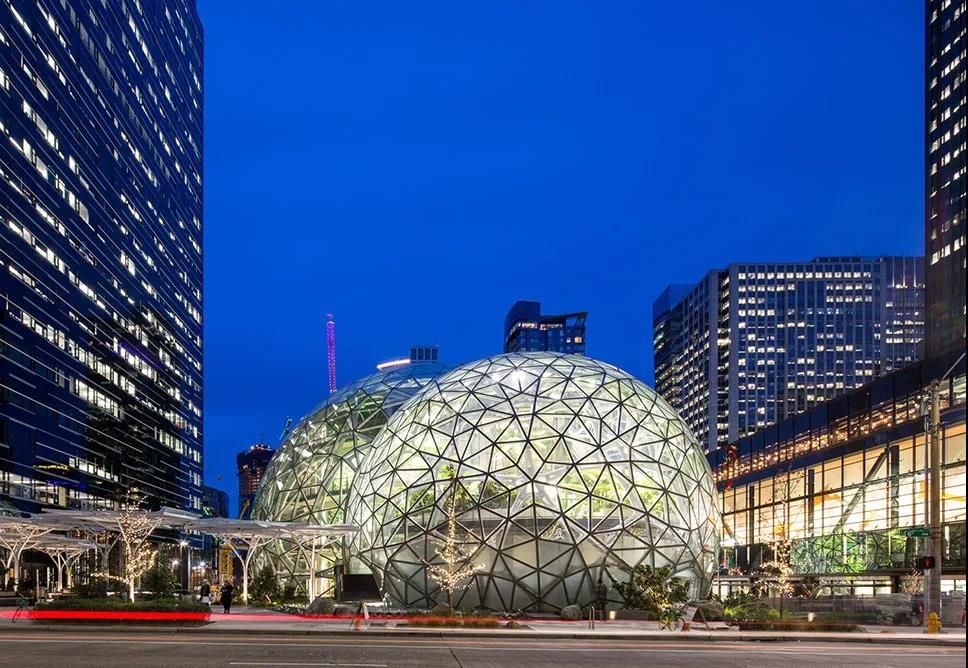
The headquater of Amazon in Seattle
(The picture comes from NJJB)
For example, Amazon, the giant in the e-commerce, built a artificial spherical “rainforest” and invested a huge amount of capital to control the room temperature and humidity to support over 40,000 plants in the office. All these efforts are made to improve the natural environment for their employees and stimulate group creativity.
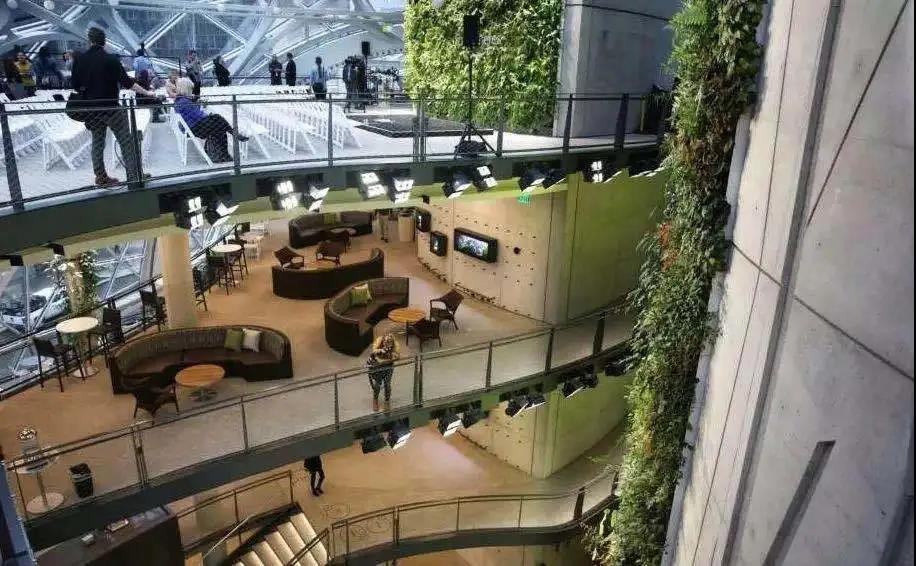
The headquater of Amazon in Seattle
( The picturecomes from WSJ Wall Street Journal)
In a situation where the enterprise lacks technology and capital, good design thinking can make contributions. For example, by using “Fuzzy Space” , a large open floor plan, the AICL, a communication consultancy company located in Mumbai, created elements that interplay life, work and environmental space to meet the needs of open interaction when employees are providing solutions to different companies.
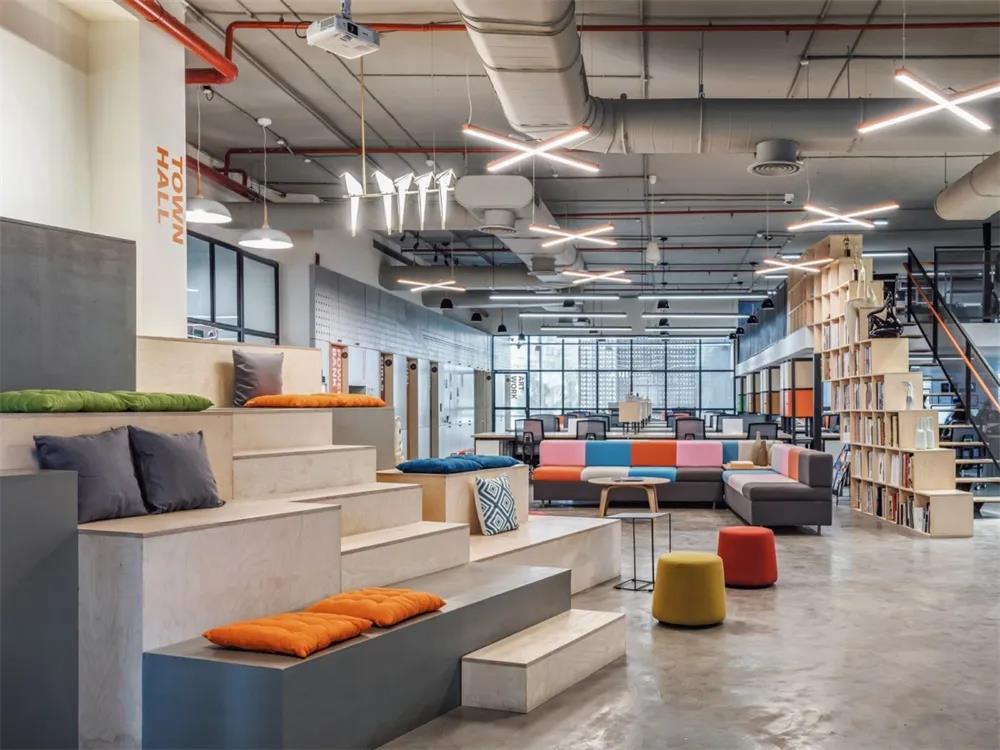
The office of the AICLcommunication consultancy company
( The picture comes from GLOBAL DESIGN TREDNS)
In China, a good example is the Tencent Building of Binhai located in Shenzhen. It uses three “belts” to connect three work and living spaces of different functions. With a design that considers climate conditions such as the solar and wind model, the view of nature and the sea, the building has excellent natural lighting and ventilation and provides interactional opportunities among departments.
*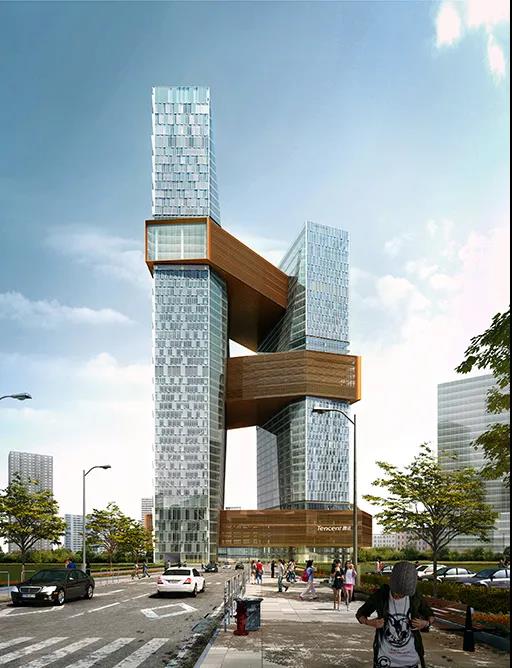
The outlook of Tencent Building of Binhai
(The picture comes from NJJB)

The interior of TencentBuilding of Binhai
(The picture comes from B+H)
The column of insights into Red Dot design masters will discuss the issue of improving working condition through office design and share 3 products that won the Red Dot: Product Design. The award-winning works are not confined by the organizational type and size of companies and can be applied to almost all working places. They also contain the secret of office design. We conclude three design trends and are ready to share them with you.
01
Design that combines functionality and spatial artistics
PLAYWORKS

Manufacturer: Fursys Inc.,Seoul,Korea
In-house design : Eunjee KimTahn Shin
Design: Claudio bellini design and designcompany, Milan ,Italy,
Red Dot Award 2019
For modern office environments, PLAYWORKS enables both an individually designed workplace and creative communication between colleagues. The seat’s 30-degree swivel mechanism to the left or right and the ergonomic design of the panel in the back rest offer a high measure of flexibility and thus increase comfort as well as natural, interactive communication. The detachable screen module structures the private space and ensures the necessary concentration on work.
PLAYWORKS impresses with the innovation of its swivel seats. They increase the flexibility of communication and work in a modern office.
02
Design that improves the creativity and health of employees/MARICS conference chair
MARICS

Manufacturer: The UE Furniture Co.,Ltd
In-house designer: Jun Cheng
Red Dot Award 2019
Marics is alight and elegantly designed chair that is just as suitable for the workplaceas for visitors or meeting rooms. It is characterised by clear, organically curved lines and equipped with an adjustment and tilting mechanism that allow stilting of up to 19 degrees. It thus supports both concentrated work and relaxed sitting. An innovative 4-axis chassis ensures balanced mobility and an integrated lever permits intuitive modification of the seat height.
The Marics conference chair fascinates by the simple elegance of its design, which goes hand in hand with a high level of functionality geared to contemporary requirements.
03
Design that is based on the work characteristics, working space and human relationship
Workstation – ThinkingQuietly
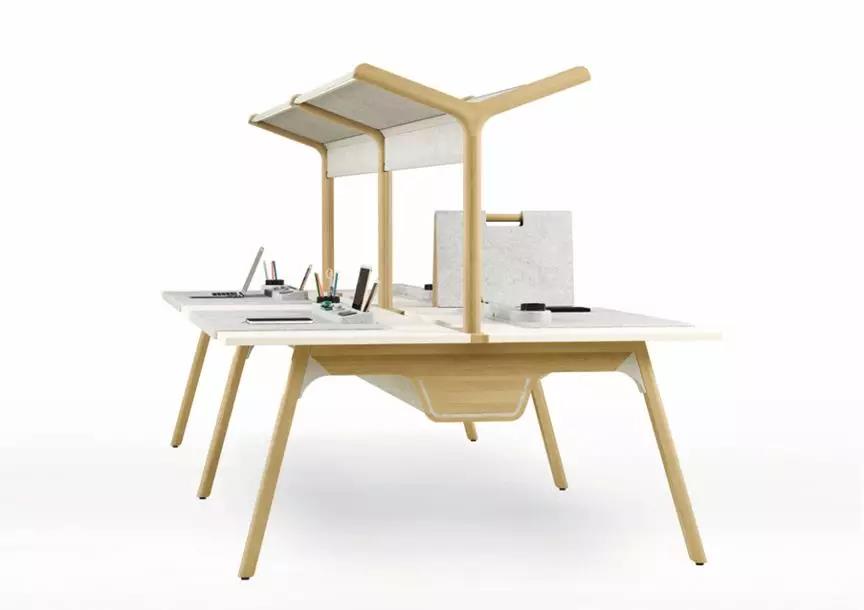
Manufacturer: Thinking Works
In-house designer: Thinking Works
Red Dot 2018
“Thingking Quietly” is an open plan work-station. Its contemporary, noise-insulating materials make for a balanced sound environment, contributing to a quieter workplace. A range of accessories increases the acoustic performance and provides the user with amore rewarding working environment. Accessories include a living terrarium acting like a dividing screen, a mobile divider that doubles as a carry bag andopens to provide personal storage and a power source for charging laptops ormobile phones and a desk pad made from felt materials which add a further acoustic element.
Statement by the Jury: The design of the ThinkingQuietly workstation combines at a high level an effective sound proofing construction with an attractive appearance.
From the above examples, we can see that better working quality can be achieved byimproved office design. Designers should not only consider the ergonomics,interactional cooperation and environment building, but also understand thecurrent working condition of the society and the usage of technological innovation and application.

Press